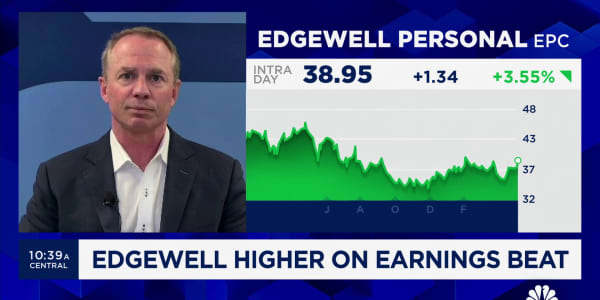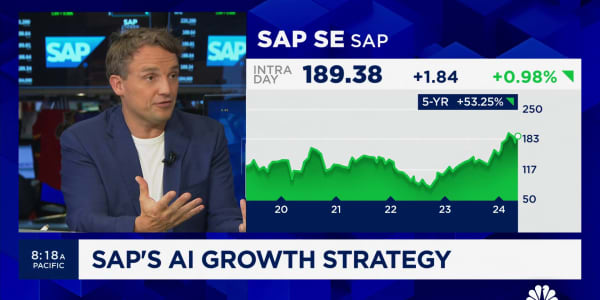
As 2014 wound down, the banking industry received a couple of gifts from regulators.
The deadline for complying with one aspect of the Volcker Rule — selling off private equity and hedge fund holdings — was extended to 2017 from 2015, and the swaps push-out rule, better known as the Lincoln Amendment, was repealed. Repealing the Lincoln Amendment means banks will no longer have to "push out" a portion of their derivatives business into a non-FDIC insured entity.
Both the Volcker Rule and the Lincoln Amendment are part of the Dodd-Frank Act, a sprawling piece of bank reform legislation passed in July 2010. Three and a half years on, roughly 90 percent of the rules required under Dodd-Frank have been written, though not all have been fully interpreted or implemented by regulators.
CNBC sat down with Dan Ryan, chairman of PwC's Financial Services Regulatory Practice, to get his read on what is ahead on the regulatory front for the banking industry in 2015, whom the legislators are to watch, and how the regulations are impacting the industry today, and how they might affect it in the future.
CNBC: Ninety percent of Dodd-Frank has been written, but how these rule should be applied is still not clear. What rules need clearer interpretation in 2015?
Ryan: There are three big ones. One is Volcker, which is the rule against proprietary trading and how much risk-taking the bank does. The rule has been written, lot of controversy over it. The banks have submitted a lot of data, the biggest banks to the regulators, and the banks are waiting to hear back as to what the regulators think about the results. The other is the living wills area. The FDIC has been quite vocal about saying the living wills for the biggest banks are not credible.That means they don't believe the banks could be unwound through the bankruptcy system without some kind of federal bailout. The Fed, who also has to weigh in, has been quiet about this, so I think this is going to be the year we find out what the real answer is to the too-big-to-fail issue. The third thing is the liquidity coverage ratio. The banks now have to hold a lot more liquidity than they did pre-crisis, so we'll see what kind of impact that is going to have both in terms of the way the banks do business, the way they lend and the whole deposit business in general.
CNBC: There have been a number of new capital rules imposed on the banks. Is it too much?
Ryan: The largest banks will be holding anywhere from 12 percent to 14 percent of their risk-weighted assets in capital and then they may have to hold long-term debt twice that number. So, a lot of folks have watched Jimmy Stewart in "Its a Wonderful Life," and when everyone come in to request their money back he says, "I don't have your money." Well, now banks will probably have 30 cents on the dollar to give back. That will be substantial, but the real issue will be what does it mean for bank investors? Are you going to want to invest in a business that has to hold 30 percent of its cash in reserves for a future date?
Read More'Shadow banking' set for breakout
CNBC: Are big banks safer?
Ryan: In terms of having more liquidity, more capital, lower risk, absolutely. The question will be, though, does their swelling market share create more of a systemic risk for the U.S., economy? After looking at this over five years, I don't think so. In many respects having larger, safer banks probably creates less systemic risk than breaking up and diversifying that risk among 30 banks. A smaller (number), bigger, but more well-regulated and controlled (banks) might be the right answer from the systemic risk perspective.
CNBC: What does a Republican-controlled Congress mean for Dodd-Frank?
Ryan: I'm not sure the Republicans and Democrats disagree too much on the basic provisions of Dodd-Frank when it comes to the biggest banks, which is more capital, more liquidity, lower risk-taking. I think where you'll see some peel back on Dodd-Frank and some unity will be around maybe raising the requirement of what is a systemically important bank in the U.S. So the $50 billion minimum may very well go to $100 billion. I think any benefit will come to the smaller banks, not the big ones.
Read MoreWall Street banksmaking huge bet on this
CNBC: Who are the people to watch in Congress when it comes to any changes in bank regulation?
Ryan: I think the biggest one has to be Elizabeth Warren. She is the most vocal of the anti-Wall Street, anti-bank crowd. She is both one trying to preserve Dodd-Frank from the Democratic side and she is also a potential presidential candidate. So she is vocal, she is credible and I think folks are worried about her. I think Sherrod Brown and Dick Shelby, the heads of the two chairs of the (Senate) Banking Committee, they are probably more alike than different with their focus on middle America and the small U.S banks. So I think it will be Elizabeth Warren who will define the controversial aspects of this next year.
Read MoreElizabeth Warren on attack vs. Obama Treasury pick
CNBC: Will we see big banks break up because of regulation?
Ryan: That is really going to be up to bank investors. I think regulators won't require them to break up. I think Congress won't require them to break up. I think the question will be, will investors continue to put money into the banks given the fact that they have to hold so much liquidity and capital in reserve and can't apply it toward their businesses, and their valuation might get impacted? The regulators right now determine more or less how much dividend they can pay their shareholders, how much they can compensate employees and what they can and can't do with their capital and liquidity. So if bank investors stay with these companies I don't think we'll see breakups. If the equity markets dictate that valuations are too low and the breakup value is more, that is when you'll see them.






